

Delhi Tourist Attractions is the capital for a reason. Do you know that this union territory is the center for every field of the country including tourism? Starting from ancient monuments to mouthwatering street food, this city is the best to start your vacation. The city is blessed with numerous attractions of varying genre. Delhi is best for sightseeing, exploration, shopping, pilgrimage, backpacking and other activities. The best part is that, most of the attractions are at prime beauty throughout the year.
The beauty of the land is tribute to ancient kings, Mughals, Sultans and the British. There are myriad stories of how each monument came into existence. With the right guide, you will be amused with the history and richness of the land. This land is flawless with its collection of heritage sites, pilgrimage spot and architectural sightseeing spot. Delhi is a mixture of modernity, spirituality and history. The beauty of the land does not end with sightseeing. There are numerous colonial and modern markets to stroll and thousands of unique souvenirs to buy.
India Gate
India Gate, one of the largest war memorials in India, stands 42 meters tall, surrounded by lush, green gardens on both sides of the road. The arch of India Gate houses the ever-burning Amar Jawan Jyoti, in remembrance of the Indian soldiers who laid their life for the country. The patriotic ambiance is made cheerful by the hustle bustle of the Delhiites. Enjoy family fun with picnics in the garden, relishing ice creams or paans even at midnight and mini-car rides for the kiddos.
Qutub Minar
Qutub Minar, at 72 meters, is the tallest brick minaret in the world. It is made of red sandstone and marble. Inside the tower, a circular staircase with 379 steps that leads to the top. Furthermore, it is surrounded by several other monuments which are historically connected to the tower. It is a must-visit for those of you who take interest in history, heritage, or are photography enthusiasts.
Jama Masjid
Jama Masjid, one of the largest mosques in India, just opposite of the Red Fort, is an integral part of Old Delhi. Jama Masjid is an architectural wonder and one can indulge in learning a different culture or photographing the beauty of the place. There are numerous heritage, cultural walks and also food & photo walks to explore the locality and make it a happy memory.
Purana Qila
Purana Qila or Old Fort was built under Sher Shah Suri but completed by Humayun. History and ruins may not appeal to everyone but boating in the adjoined lake is always preferred in the company of friends, family or a loved one, especially when the weather is pleasant. Boating is open for all days except Mondays, from sunrise to sunset. It's a nice ride at a nominal price. Boating at Purana Qila is always a good idea to escape the city hustle bustle for awhile.
Humayun Tomb
Humayun’s Tomb in South Delhi is the tomb of the Mughal Emperor. It was the first structure to use red sandstone at such a large scale and is an architectural excellence surrounded by various smaller monuments. Due to its architecture and landscaping view, it is a popular photography heritage site. Many free photo walks and photography workshops take place here which are guided by professional photographers.
Lotus Temple
Lotus Temple is a Bahá'í House of Worship and true to its name is styled after a lotus flower with the structure made of pure white marble. It is a very popular attraction in the city and has a footfall of 10,000 visitors each day. Like all Bahá'í Houses of Worship, Lotus Temple is open to all, regardless of religion and invites people to pray or meditate silently. Enjoy the outstanding lush green surroundings of the temple area and maybe even lounge around for a perfect picnic spot. Many music, dance, storytelling, tours and walks take place at the amazing Lotus Temple premises.
Jantar Mantar
Jantar Mantar ('instrument for calculation") is an observatory located in Central Delhi that was built to trace the astronomical phenomena and to ascertain scientific data from the same. The observatory is a fascinating sight with huge instruments of masonry.It is a famous tourist attraction with thousands of people hiring guides to understand the significance of each structure. It is also the site for many protests and rallys.
Rashtrapati Bhawan
The Rashtrapati Bhavan is the official home of the President of India and houses the president's official residence, halls, guest rooms, offices, huge presidential gardens (Mughal Gardens), large open spaces, residences of bodyguards and staff, stables, other offices and utilities. Rashtrapati Bhavan is open for visitors on Friday, Saturday and Sunday via an online registration process. It is the second largest residence of a head of state in the world after Turkey. It attracts a lot of tourists and local visitors. It is a great way to learn about the Presidential and Political History of India.
Akshardham
Akshardham or Swaminarayan Akshardham complex is a Hindu mandir, and a spiritual-cultural campus in New Delhi. It is the world’s largest Hindu temple according to the Guinness World Records. The various attractions at the Akshardham include, Sahajanand Darshan, Theatre, Boat Ride, Musical Fountain, Garden of India. The most popular are the Musical Fountain and the 15-minute boat ride. Musical fountain is actually India's largest step well. It is colorful and spellbinding show represents the circle of life.
Red Fort
Red Fort is a red sandstone heritage site in the centre of Delhi. It is one of the three architectural wonders by the Mughal Emperor, Shah Jahan. Red Fort is the venue of the Independence Day ceremony every year on 15th August. It is a major tourist attraction in Delhi as it tells a lot about the Mughal reign in India.
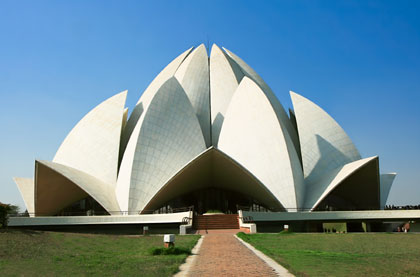
Lotus Temple or Baha'i Temple, called in more traditional way, is a house of worship completed in the year 1986 under the supervision of Persian architect Fariborz Sahba. Lotus being a symbol of peace and prosperity.
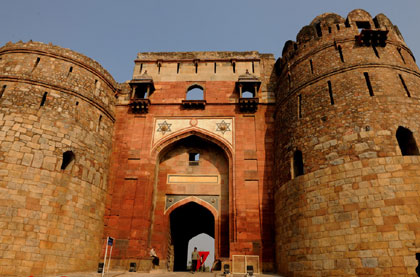
Purana Quila is the oldest structure built in the confinements of the city, Delhi. Standing pensively besieged by wild flora, Purana Quila is two kilometers in the circuit area and on lines of an efficient fortress design.
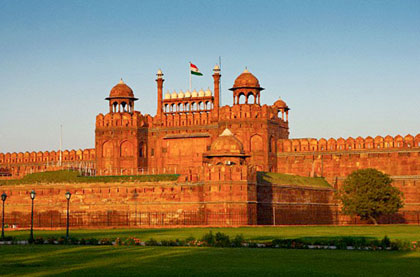
Exemplifying the prowess of Mughal architects and a true manifestation of the golden period of the Mughal era, Lal Qila, also known as the Red Fort, is one of the most important monuments of India. With a construction.
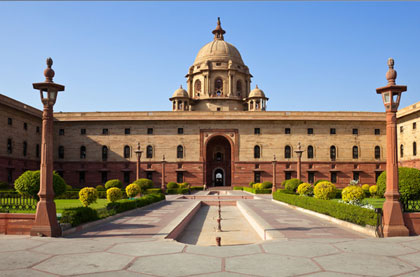
The Rashtrapati Bhavan is one of the largest residential houses of any Head of the State in the world in terms of its size, vastness and its magnificence. This marvelous piece of the British era was the residence of the Viceroy.
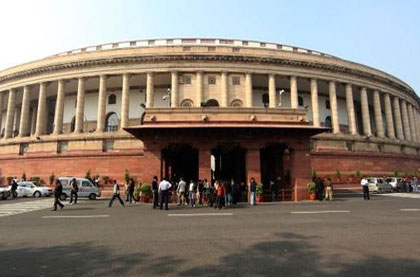
The Parliament House, known as Sansad Bhavan in Hindi, is the place where the Indian Parliament meets. It is the place where parliamentarians of our country sit and discuss various issues of national interest.
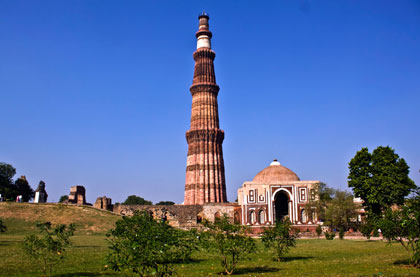
The tall and ever attractive monument of Delhi which can be seen from most parts of the city is called the Qutab Minar. Every body has the same question when one sees the structure for the first time.
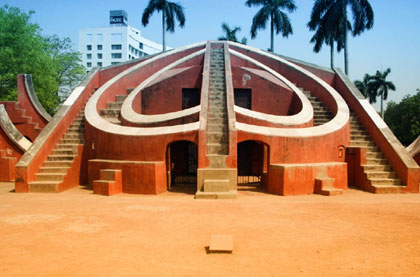
The name Jantar Mantar has been derived from Sanskrit language. Yantra (Jantar) means instruments and mantra means formulae. Hence in the parlance of scientific community, Jantar Mantar is an observatory to accomplish.
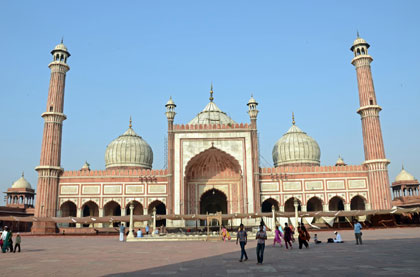
Masjid-i-Jahan Numa or as it is globally known, Jama Masjid means the mosque commanding a view of the entire world. Jama Masjid is the largest Islamic congregation place in India. It was build under the watch.
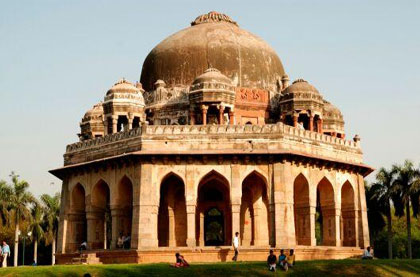
Lodi Tomb was built in 1517-18 by Ibrahim Lodi, son of Sikandar Lodi. The alluring maqbara or the tomb of Sikandar Lodi, the second Lodi ruler of the Afghan Lodi Dynasty, is located in the picturesque premises of old Lady.

Standing at 42m tall, All India War Memorial or The India Gate is a symbol representing valor and resilience of 90,000 Indian soldiers who lost their life in World War I and the Third Anglo-Afghan War. Designed by Edwin Lutyens.
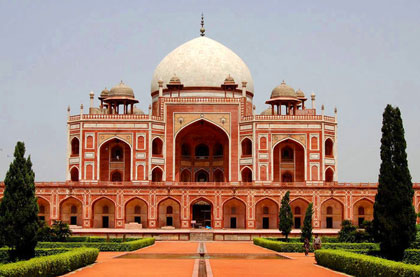
Humayun's Tomb was built in 1565 A.D., posthumously, in the memory of Humayun by his widow Hemida Banu Begum. Also known as Tomb of the Perfect Man or 'Insan-i-Kamil', which now stands as a UNESCO Heritage site.
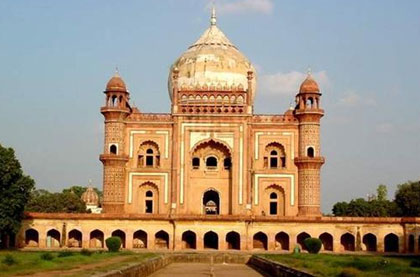
One of the last tombs that are enclosed by a Mughal inspired garden of approximately 300 sq meters, Safdarjung's Tomb is situated in the capital near Lodhi road. This mausoleum was built under the guidance of Mughal Emperor.